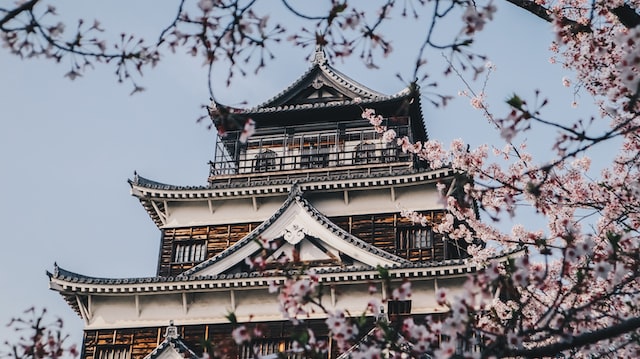From Tokyo to Osaka to Kyoto, Japan’s rich history and culture can be reflected not only in its shrines, temples, imperial palaces, and museums but also in its still-existing castles. With Japanese castles, one thing that would easily stand out is how they tend to share some architectural similarities. Hiroshima’s medieval stronghold, however — Hiroshima Castle is every bit the fortress you would expect it to be. Not only does it have massive stone walls, but it also comes with a large moat with baileys and bridges to complete the look.
Situated in the very center of Hiroshima City, the castle is as impressive as Japanese architecture goes. Locals fondly call it Rijo or Carp Castle. This is mainly due to the schools of koi fish swimming in the castle moat, which eventually earned it the nickname. While the original castle got destroyed in the infamous atomic bomb attack on August 6, 1945, it was rebuilt as a reminder of its historical legacy. Today, the proud castle still stands, looming over the heart of the city.
With its impressive architecture, intricate design, deep history, impressive surrounding park, and very accessible locations, it’s a popular destination for tourists and locals alike. Stunning and impressive, it is an undeniable symbol of the city’s resilience and determination in the face of tragedy. Whether you are interested in Japanese history, and architecture, or simply looking for a unique and educational experience, Hiroshima Castle is worth a visit.
The history of Hiroshima Castle
Hiroshima Castle was originally built in 1589, back when Japan was still under feudal control. A powerful warlord, Mori Terumoto, ordered the castle’s construction to serve as the city’s economic and political center.
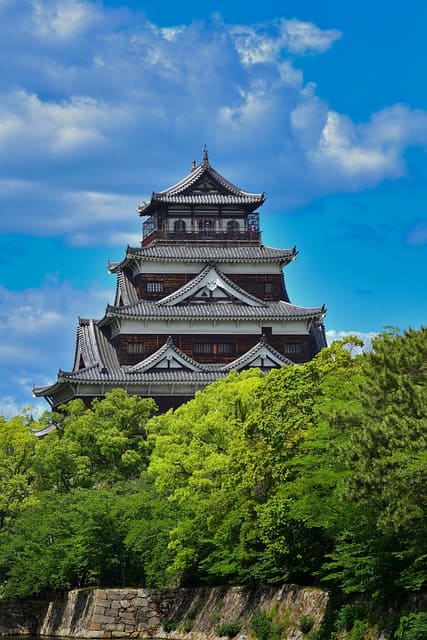
They deliberately selected the castle’s location due to its accessibility to land and water transportation. Back then, when the civil war was rife across the country, these factors can make or break a feudal lord’s rule. There were rumors that Osaka Castle is the inspiration for the castle’s construction. This seemed evident in the way both castles have 5 donjons and how both towers above their city centers.
In 1600, during the Battle of Sekigahara, Mori Terumoto lost. This resulted in his eviction from the castle. For 12 generations, successive lords took on the castle’s occupancy. During the Meiji Restoration, many castles across Japan were dismantled to sell their iron fittings and timber to raise funds. However, Hiroshima Castle was spared and was instead turned into the Imperial Army’s military base.
Destruction during World War II
Before 1945, Hiroshima was one of the major military cities in Japan. When the Sino-Japanese war erupted, the entire area surrounding Hiroshima Castle was designated as a restricted military zone. However, during special events, the area was opened to the public such as when the cherry trees bloom in spring.
During World War II, the Japanese army used the castle as their headquarters. However, when the atomic bomb was dropped on the city on August 6, 1945, the castle along with the rest of the city was destroyed by the impact. Located only a mere few hundred meters from where the bomb dropped, it was completely obliterated by the heat and force of the explosion.
Reconstruction and rebuilding
After the war, the city of Hiroshima decided to rebuild the castle as a symbol of the city’s resilience and determination. The reconstruction effort also provided a backdrop to the city’s new story — that of being a city of peace. In 1955, the then-mayor of the city revealed his plans in rebuilding the castle. This was part of his plans to transform the city into a vital tourist destination. The goal is to highlight the structure as a key historic symbol.
Reconstruction of the castle swiftly followed. The goal was for it to resemble its original form as closely as possible. It was a massive undertaking, and it involved the use of traditional building techniques and materials. Since it opened in 1958, the castle has served as a setting for numerous historic exhibitions and other historical artifacts. While certain parts of the castle were reconstructed using reinforced concrete instead of pure timber, a large part of its ruined buildings are still preserved today.
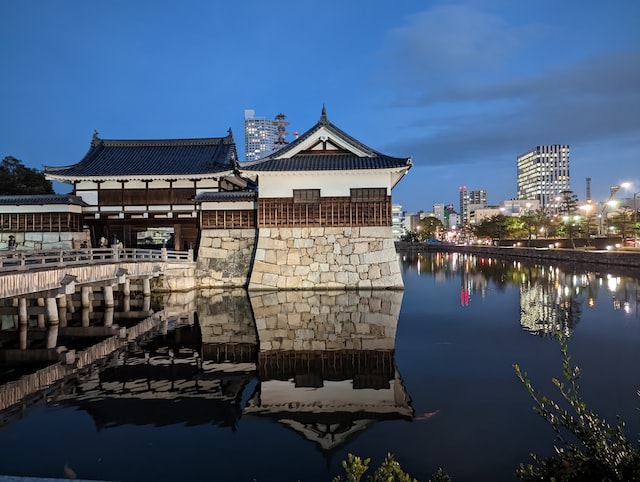
Castle tower
Very much like Osaka Castle, which Hiroshima Castle is rumored to be inspired from, the main tower extends five stories up. It’s quite common for many Japanese castles’ outer walls to have black and white paint. A popular example would be Hyogo prefecture’s Himeji Castle and Matsumoto Castle in Nagano prefecture. However, Hiroshima Castle’s outer walls are quite different as it has wooden slats attached to it instead.
The castle tower has an observatory inside where visitors can climb up and look out to get a view of the rest of the city below. Many of the famous landmarks in the city can be seen from here. This includes the Peace Memorial Park and A-Bomb Dome. If the weather permits, it is even possible to see Miyajima Island from here. You can also use the telescopes if you want a better, clearer view. Just pay the corresponding fee.
Within the castle is a museum where military commanders credited for the building of the original castle are displayed. Arms and armor belonging to Mori Terumoto, who had the castle built can be seen inside as well. Items belonging to the Mori family are also displayed within, along with displays of the castle and its surrounding areas.
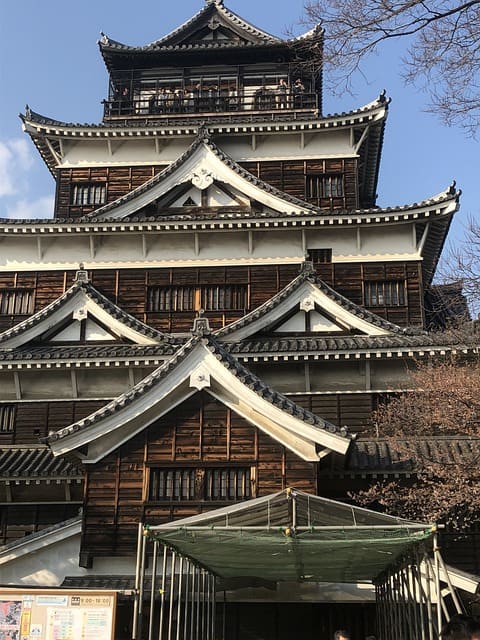
Check out the castle ruins
When the city was bombed in 1945, almost everything else got flattened. This included the structure of the original castle. However, there were remaining ruins, remnants of the old architecture that did survive the blast. Many of these ruins are still preserved and visitors, especially those interested in Japanese history would undoubtedly want to see them up close.
Among the ruins that can still be seen today include the original foundation stones of the castle, the castle gate, and the stone walls. There are also still remnants of the ruined south and east towers for visitors to see. One particularly interesting area is the Honmaru site. Back then, it used to be an integral part of the original castle structure. During its heyday, it was used as a residence of the lord of the castle. Eventually, it was used by the Japanese military when they transformed the castle into their headquarters.
Castle turrets and the main gate
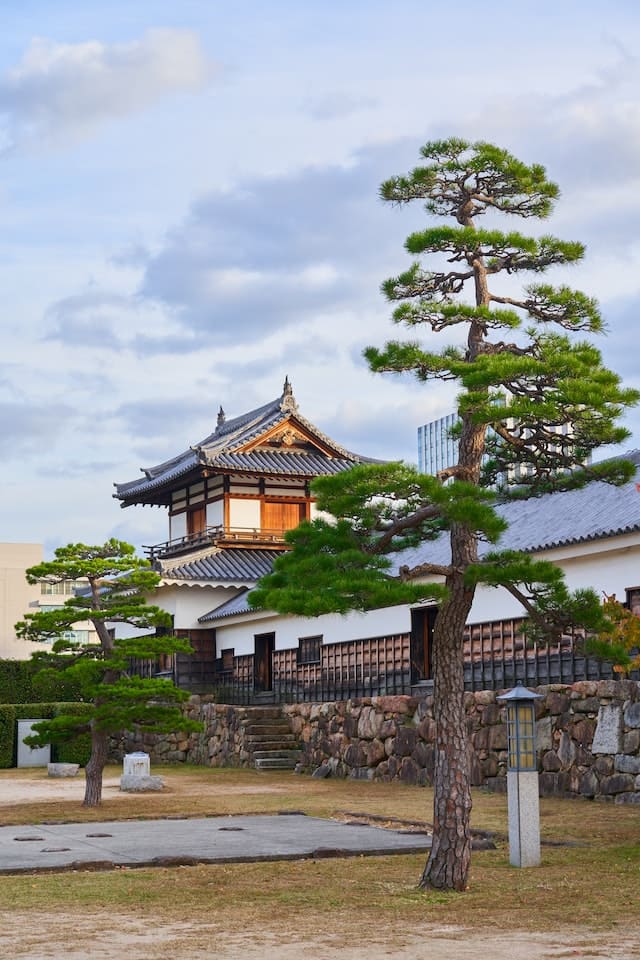
The early 1990s saw the reconstruction of the main gate of the castle. The turrets followed soon after. Visitors who get the chance to visit the castle should check out the interesting architectural style with which the main gate is built. Known as Yagura-mon,this architectural style became widely used during construction and building works in the Edo period.
When the gatehouse was first constructed, it was intended to strengthen the castle’s defense. This also explains why it was built with two stories that are connected to turrets. A particularly interesting fixture in this part of the castle is the Taiko Yagura. The turret was named after the Japanese taiko drum, often used in Japanese festivals or matsuri. The drum is visible in the second story and back in the day, was used to send signals and messages between samurai.
Admire the samurai culture display
If you’re into samurai, you’ll love the display on the castle’s third floor. Dedicated to samurai culture, the exhibition features displays including samurai armor, swords, and weapons belonging to the former lords of the castle. What’s interesting is how the samurai suits of armor on display have several components. This includes the kabuto helmets, notable for their iron dome shape as well as chest armor made from leather and iron plates. On display are also mengu facemasks. They are particularly notable for their menacing face, specifically designed to intimidate enemies during battle.
On the same floor, visitors can also check out the various armor and kimono which they can try on. This would be perfect for those that want to know what they would look like in a samurai costume. It’s also a perfect opportunity to snap a few pictures or more for posterity!
See the inner moat
What castle would be complete without a moat? Hiroshima Castle didn’t just have a moat, but three! Unfortunately, only one inner moat has remained today. Over the years, the other two inner moats were filled in. These days, a good part of what used to be castle grounds are now occupied by schools and commercial buildings.
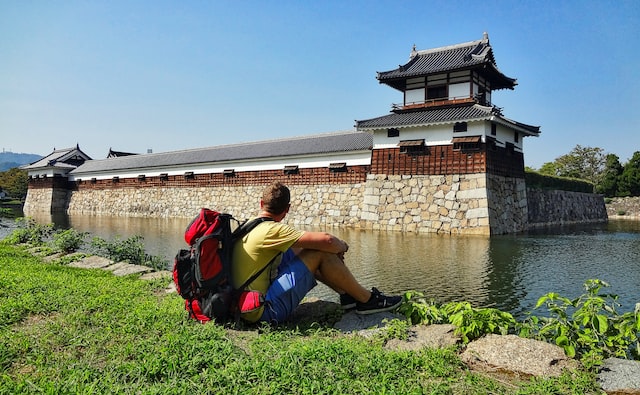
Meanwhile, the last inner moat has been designated as a National Historic Site. These days, this part of the castle features prominently as the location of the Hiroshima Food festival, an annual event that takes place every October. It is an interesting time to visit the area as the event features local produce from all over the prefecture. During this time, hundreds of food tents can be seen set up around the moat area, featuring a variety of scrumptious food selections.
Atomic bomb survivor trees
While much of the castle was ruined during the atomic blast, there are trees within its grounds that have managed to survive. Several of these trees only sustained minimal damage and are living testament to the horror that befell the city on that fateful day.
It is nothing short of a miracle for these trees to have survived the bomb’s impact considering almost every single building in the surrounding area was obliterated. The Castle itself was not spared. Many of these trees were less than a kilometer from where ground zero was. How they have managed to hold out and continue flourishing to this day is anybody’s guess. If you want to see these living miracles for yourself when visiting the castle, they’re typically earmarked on the visitor’s map. So, spotting them should be easy enough.
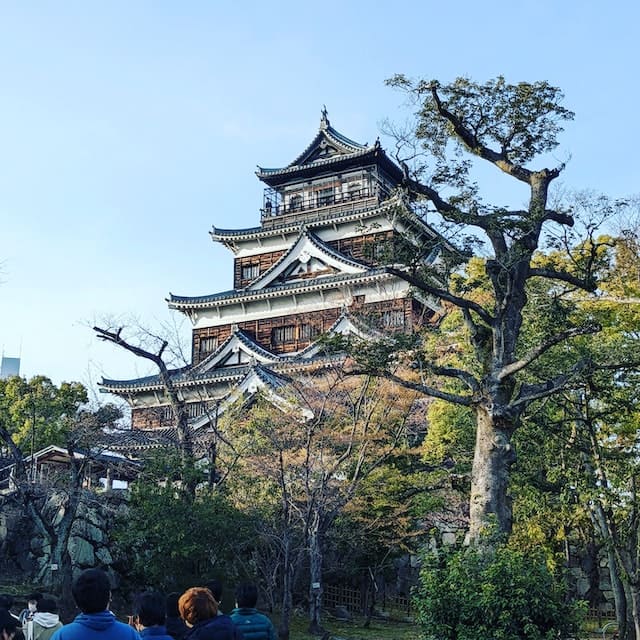
Best time to visit
While you can visit the castle any day as it is open daily from 9 AM, the weekend is still the best time to go. Samurai performances are held on the castle grounds during weekends. During public holidays and on Saturdays, a samurai parade takes place on the castle grounds from 1 PM. Every Sunday afternoon, visitors can catch a glimpse of a live show by samurai actors featuring ninjas and swordfights.
The castle is also home to around 450 cherry trees. Come spring when the trees bloom, the castle ground is a popular destination among locals and tourists who want to witness the beautiful flowers for hanami. It’s one of the most popular flower-viewing spots in the city, and it can get packed. But the views are magnificent, especially with the looming castle in the background.
A historical icon
Hiroshima’s part in shaping modern Japan’s modern history is undeniable and Hiroshima Castle is one great reminder of that. It provides a unique and fascinating glimpse into Japanese culture and history and is a symbol of the city’s resilience and determination. The castle’s central location in Hiroshima city makes it a convenient and accessible destination for travelers, and its mix of history, culture, and natural beauty makes it a must-see for anyone visiting the city.
